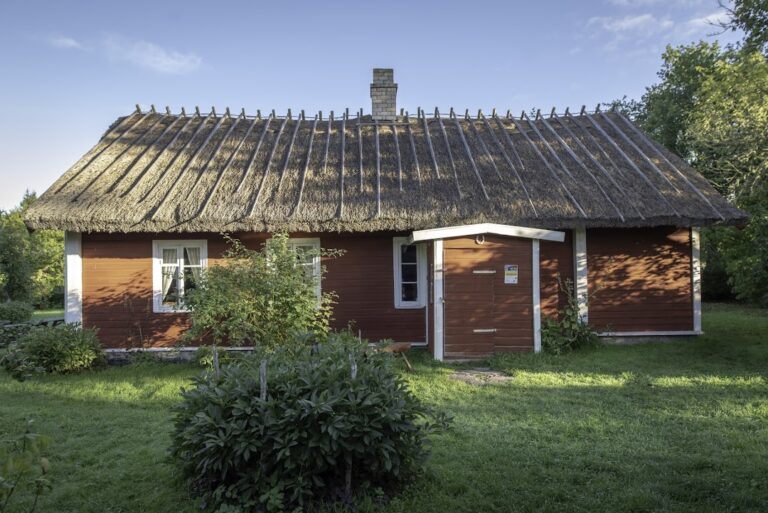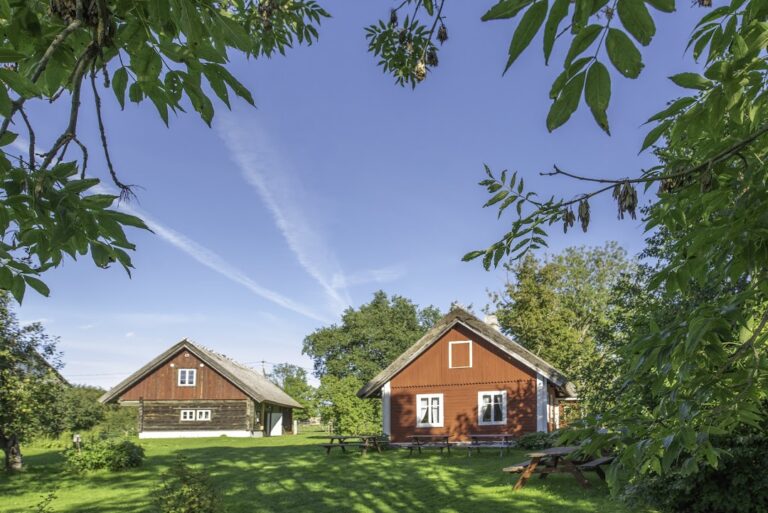Vormsi Farm Museum
Vormsi Farm Museum
Vormsi Farm Museum is located in Pearse farm (Pearsgården) in the village of Sviby. It showcases the pre-World War II culture and lifestyle of Swedes on Vormsi.
Vormsi Farm Museum is a typical pre-World War II farmhouse of Vormsi Swedes with all that goes with it. The farm has been restored based on old photographs, written sources, and the memories of Vormsi residents who were born in Vormsi and fled to Sweden to escape the war.
Museum visitors can witness buildings with authentically renovated thatched roofs, a wide range of everyday objects and clothing, and photo exhibitions about life on Vormsi and in the areas Estonian Swedes used to inhabit. Due to the isolated nature of the island, many everyday items were different from what people were used to seeing on the mainland, be it Vormsi fashion, beehives or carrying poles. The jewel of the museum is a working traditional smoke sauna, which is heated up on many a Saturday.
The idea of founding a local heritage museum was discussed on Vormsi as early as the 1930s, but the plan never came to fruition. In the 1990s, the Vormsi homeland association, founded in Sweden, revisited the concept. In 2000, a traditional Vormsi-Swede farmhouse, Pearse farm, was purchased for the farm and restoration work began. A lot of it was done by means of communal effort. Two buildings – the sauna and the old barn – were so dilapidated that they had to be demolished and rebuilt.

Sviby fire
The village of Sviby differed from the other villages of Vormsi as it had the highest number of Estonian residents and it was the only village where farmland was divided into plots before World War II. Traditionally, Vormsi had a system of stringed fields where fields and meadows were divided into strips between all the farms.
The division of land into plots was only made possible due to an accident. There was a great fire in Sviby in 1932, which turned part of the village into ruin.
A fire broke out in one of the farmhouses in the middle of Sviby on Monday 13 June 1932. It quickly spread to the neighbouring houses and soon several dozen buildings were in flames. Not much could be salvaged from the houses. Rescue efforts concentrated on getting the fire under control as it was in the middle of dry season and burning straw was flying everywhere. The fire was finally contained by the evening.
The fire destroyed the eastern part of the village – 21 farms with a total of 80 buildings. Nobody was killed in the fires because all the livestock, except the chickens, were out grazing. However, a third of the villagers were left homeless.
Donation campaigns were organised on the island, the mainland and abroad to help restore the village. Even Crown Prince Gustaf Adolf of Sweden (later King Gustaf VI Adolf), who visited Vormsi in July 1932, made a donation.
However, this was not the first major fire in Sviby as the village was nearly burnt to the ground in 1825. Perhaps the sound of being engulfed by fire is related to the name of the village. Russwurm suggests that the name Sviby derives from the Swedish word swia, meaning to burn vegetative cover for slash-and-burn agriculture (to swidden).
